Akdamar
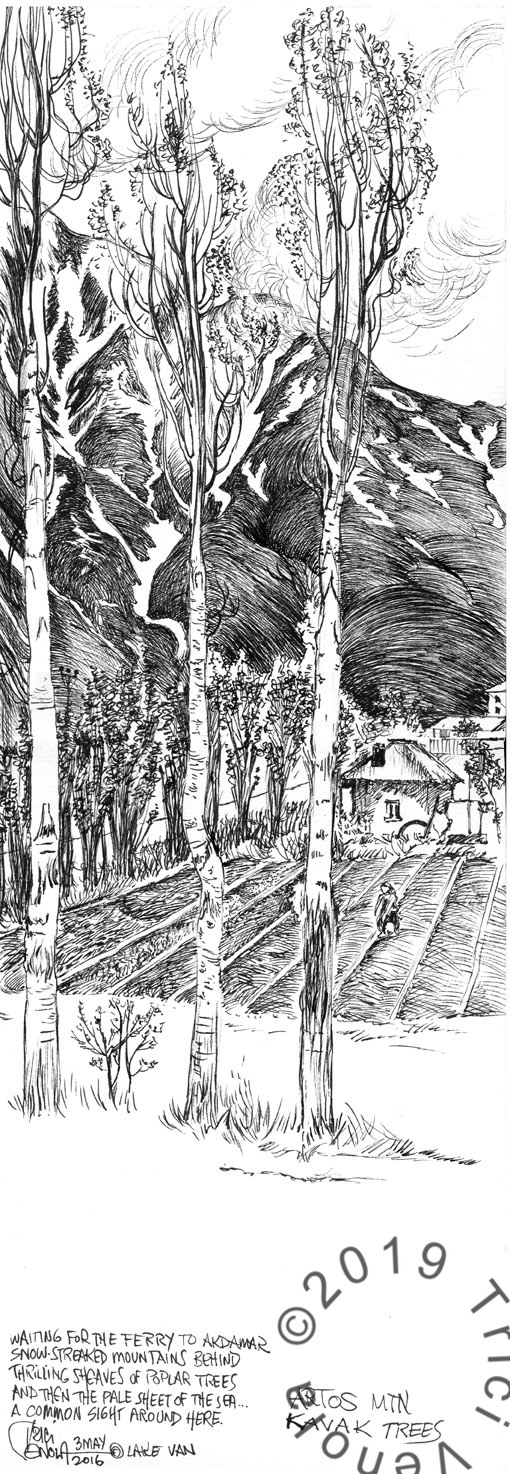
Since I was only able to be on Van for two hours, I took photographs. The entire section on Akdamar was drawn from them, over the summer following my visit. We are indebted to the Eskitasçioglu Family for making my visit possible, by including me in their family party.
All over the region of Van are these stands of white poplars with the white-streaked mountains behind. Behind us, the lake is so vast it looks like a sea. As I drew this, the man in the picture walked up and down the rows, planting his field. I was waiting for the only boat to Akdamar Island. The plan was for me to spend several days drawing the medieval Armenian church there. Since at the time there was little tourism, there were no regular boats, but I lucked out: a large and jocular Turkish family had booked one, and they invited me to come along.
I went to Van solely to draw Akdamar’s Cathedral of the Holy Cross. The vanished palace-city here in the lake was thousands of years old, part of the Kingdom of Urartu. In medieval times it was occupied by Armenian Christians. The 9th-century church is made of cinnamon-colored stone. It’s famous for its exterior, covered with large bas-reliefs.
Saints and archangels, beasts fantastic and homely, prophets and the First Couple cavort, posture and pray all over the church, carved with audacity and humor 915-921 CE. They are illustrating the Bible. Armenian scholars assure me that there is nothing like this art anywhere else.
Unlike many Armenian churches and monasteries, this one was saved from destruction in the 1950s by a Turkish poet, who literally stopped the bulldozers which had destroyed the ancient city around it. In 2005 it was preserved by the Turkish government, which cleaned off the carvings, eliminated foul painted graffiti, floored the interior, and put glass in the broken windows. It is a major tourist site and well worth a trip to Van. Once a year, the Armenian Patriarch is allowed to perform an Easter service, and the pointed roof of the church has its restored cross.

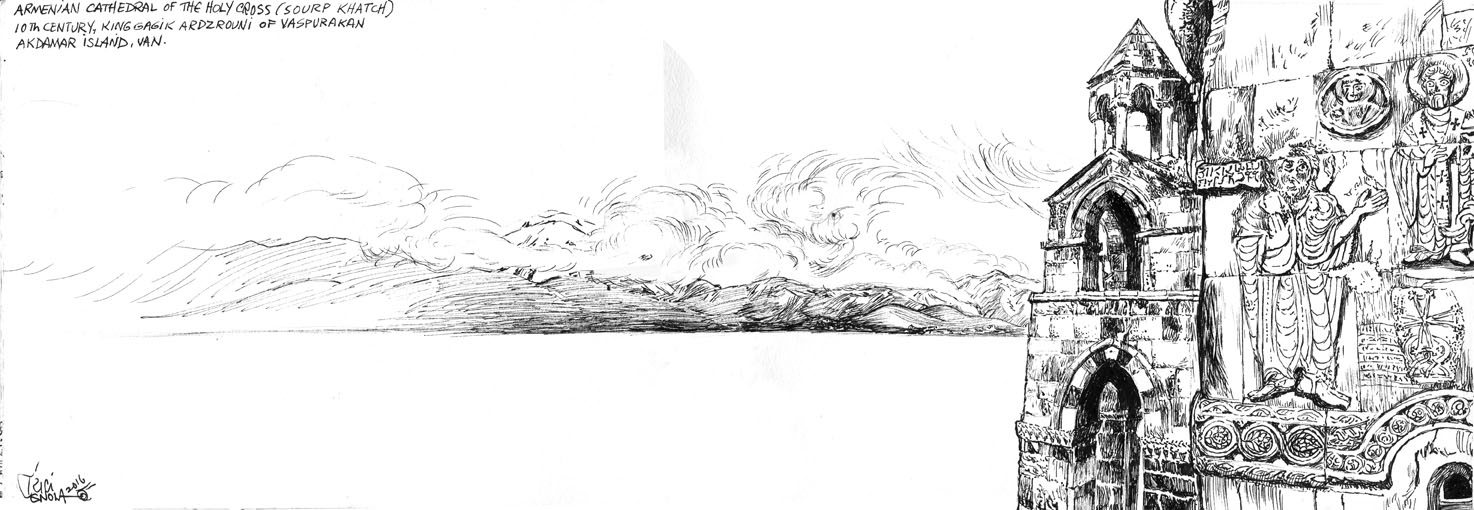
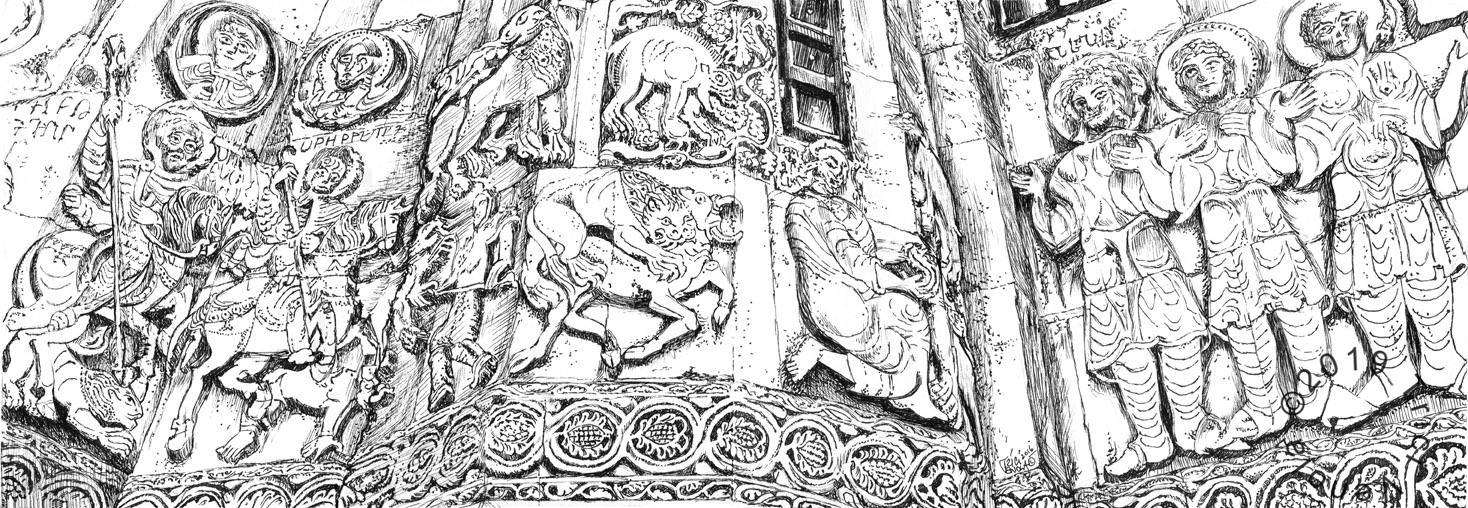
Few could read, so these figures proclaimed the Holy Word to all who looked on them. Absolute delight carved in red tufa, these figures are about 3/4 life-size and protrude about 4 inches from the stone blocks from which they are carved. One pictures the cartoons on paper or canvas fixed to the surface of blocks that stick out farther than those above and below. They would have covered the back of the canvas with pigment and traced the drawings from the front. And then up on ladders, hacking and then tapping away, finalizing with passion and skill, patiently creating the vivid images in the tedious medium. Armenian art is all based on circles. It’s testimony to the expertise of the artists that these figures carved on stone blocks are all so curvilinear. And those borders!
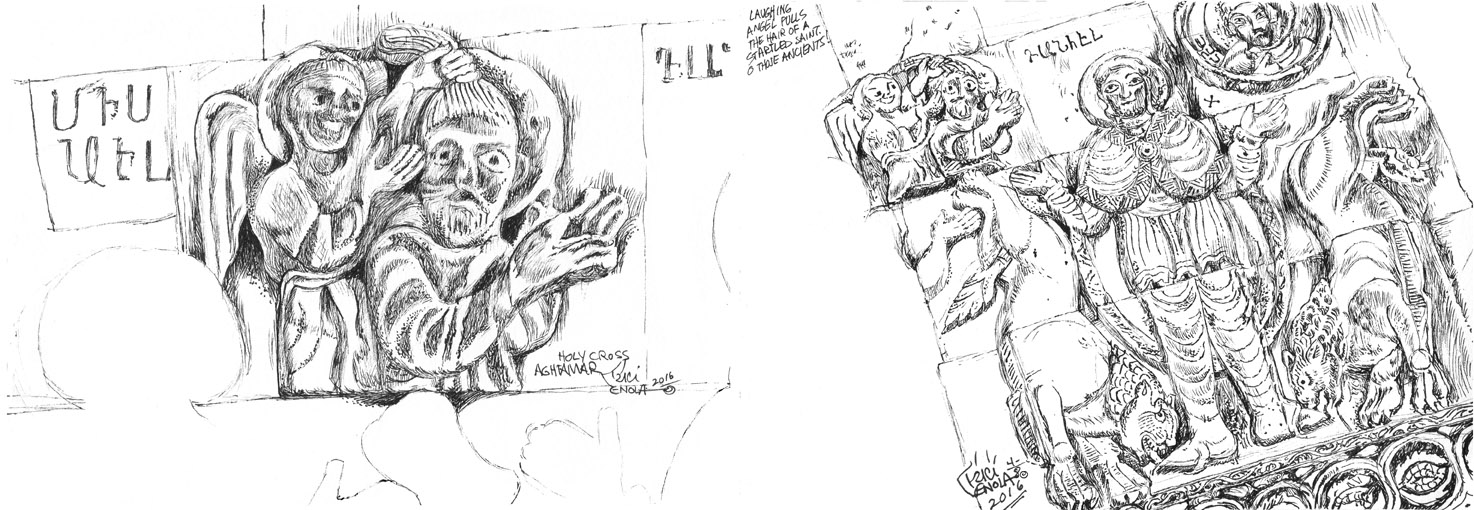
A laughing angel pulls the hair of a startled saint. O those ancients! Got to be Jacob wrestling with the angel. In addition to Jacob, a tall smiling man is flanked by two lions; their tails are between their legs and they are licking his feet. Oh but of course! Jacob Wrestling with the Angel, Daniel in the Lions’ Den. These have got to be the clearest and most delightful depictions ever. Any child could figure them out. Rather than a stern admonition in deadly seriousness, these figures exude a kindly instruction. What could instruct us better than an appeal to our shared humanity?
A shot-up saint over a zoological stack of fabulous creatures, with two happy bunnies in the centre. The rabbits are indigenous to Akdamar Island, and to many other islands nearby. Most of them are black, a hallucinatory hippity-hop among the rocks and seaweed. Torn-up celery and lettuce for the bunnies line the tourist walkways. Centuries of monks must have dined on these rabbits, worn their fur and probably made pets of them as well. They are accompanied by white goats and gulls.
Where would Turkey be without its indomitable matriarchs? This lady and I had some conversation on the boat coming over. She was unable to navigate the steep path up to the church, so I drew her inside it and sent her the picture. Al her children and grandchildren are doctors and dentists. She has a beautiful smile.
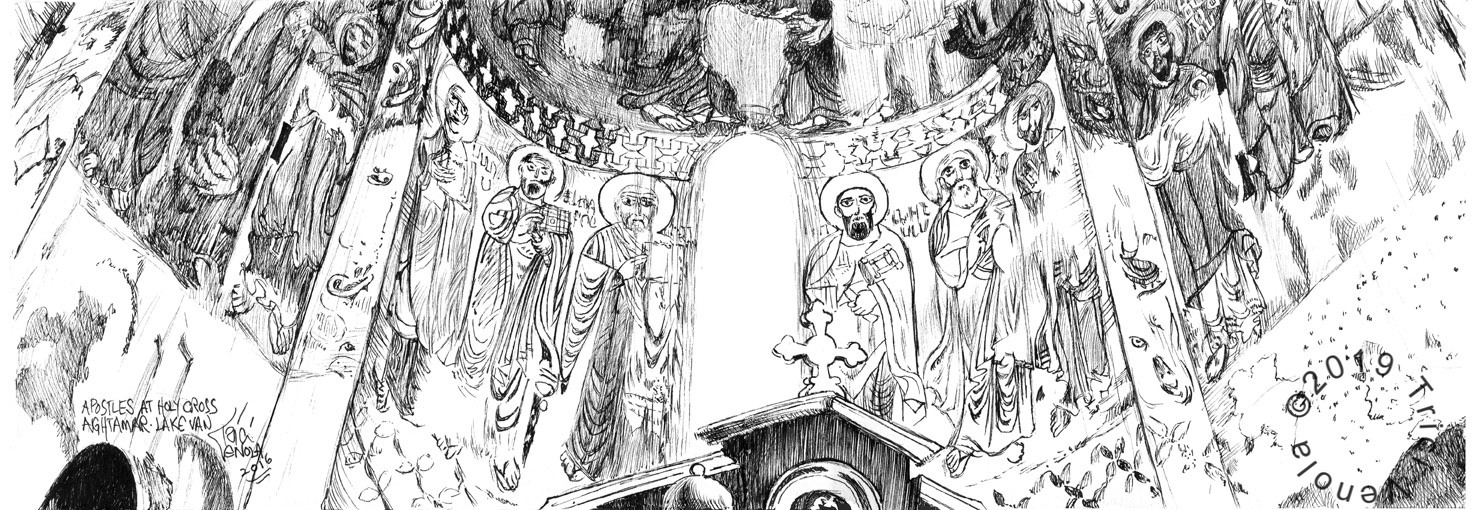
Inside the church, the art looks much more recent. Also it is unfinished, and the interior shows signs of fire damage. The pale shape at center is a window. To the left is St Peter, to the right is St Paul. Ss Matthew and Mark appear to St Peter’s left, and Ss Luke and John to St Paul’s right. We know them by their accoutrements. Other apostles flank them. Above the centre window, the artist had outlined the border, but had not finished painting it in. The frescoes likely date from 1915, as that is when the church was shut down.
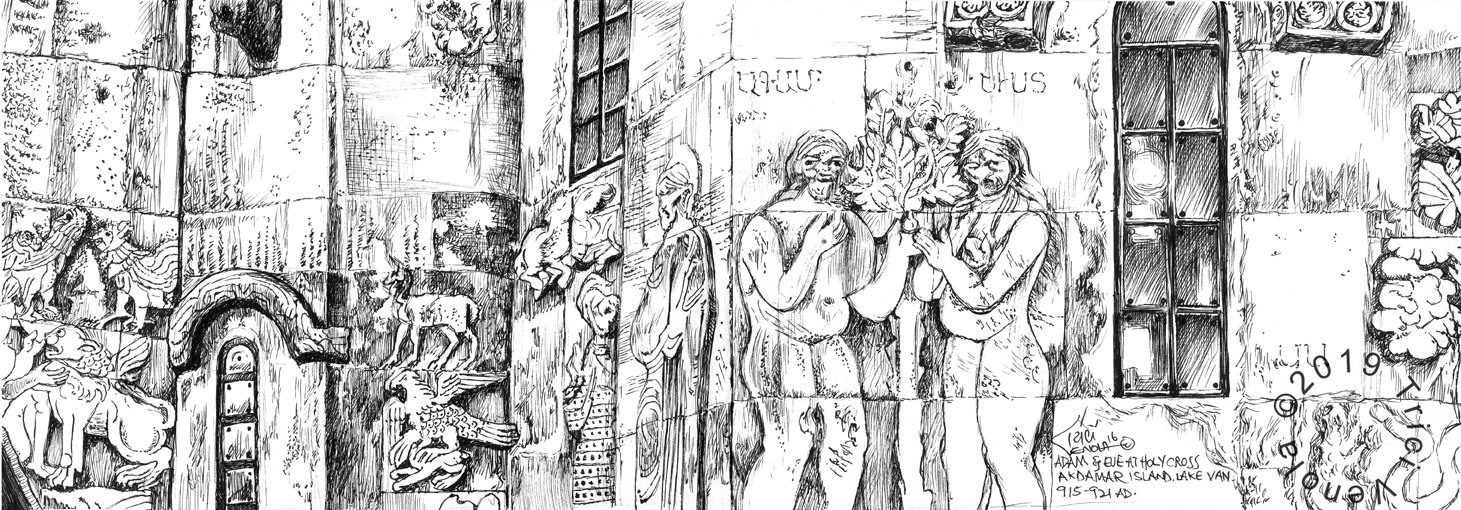
Note that Adam and Eve were carved sans gentitalia. Both faces and Eve’s breasts were chopped by vandals, yet both faces retain curiously benign expressions. Down in the lower right corner is a vandalised Eve: an eviscerated female figure. The vandals left the snake alone.
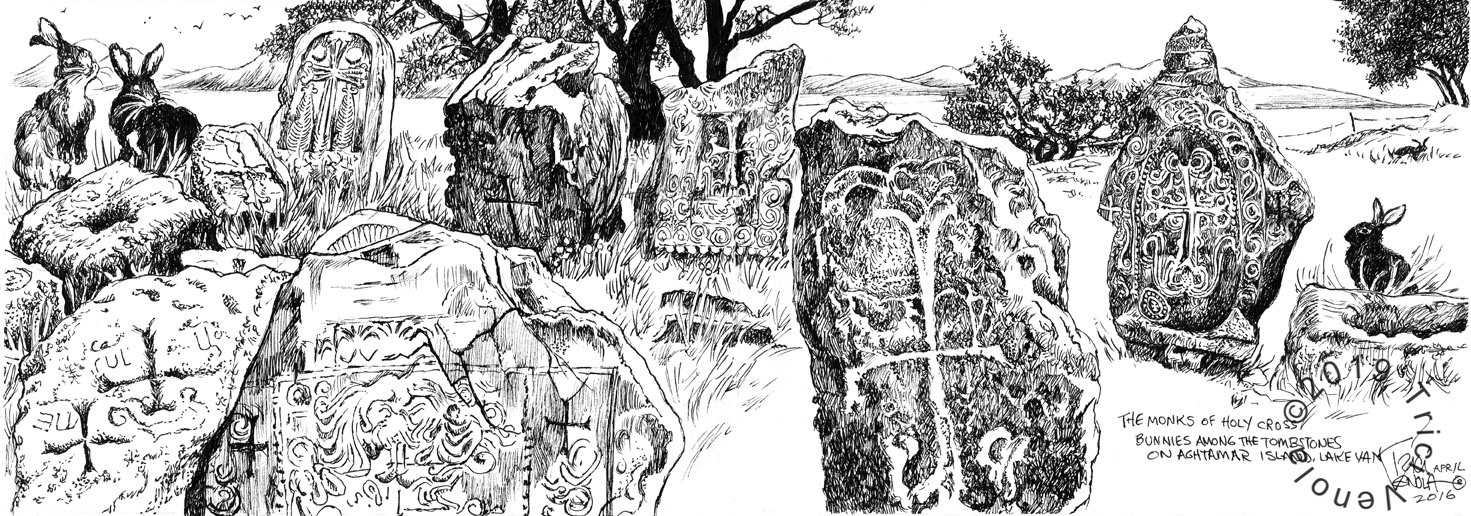
Despite the isolation- or perhaps because of it- this was a flourishing palace-city, with the church at its heart.There was a library here, and manuscript illumination, as well as the carved bas-reliefs, the paintings, the masonry. Frequent boats brought august visitors; much statecraft went on here. Yet it is remote. Now it’s dead silent, miles of pale water between you and the shore, and in the past, no electricity, rudimentary plumbing, lashed with icy storms and drifted with snow in winter, and in summer the searing heat of the East. Rising with the dawn, struggling in the dark to wake up and pray. Anything the monks lacked in creature comforts was replaced by the absolute luxury of their art and craftsmanship.Ten centuries of gravestones surround the church. Upright, toppled, broken or eroded, each tombstone is exquisite lace carved in stone with patience and care, each testimony to an entire life in faith.
[DISPLAY_ULTIMATE_SOCIAL_ICONS]
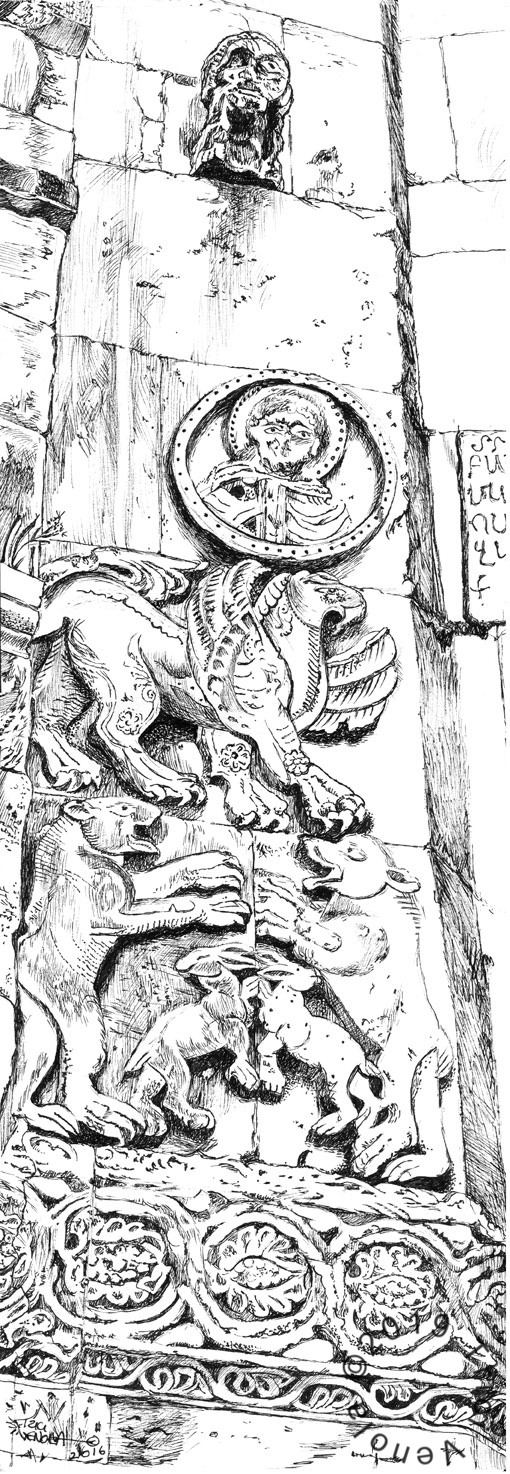
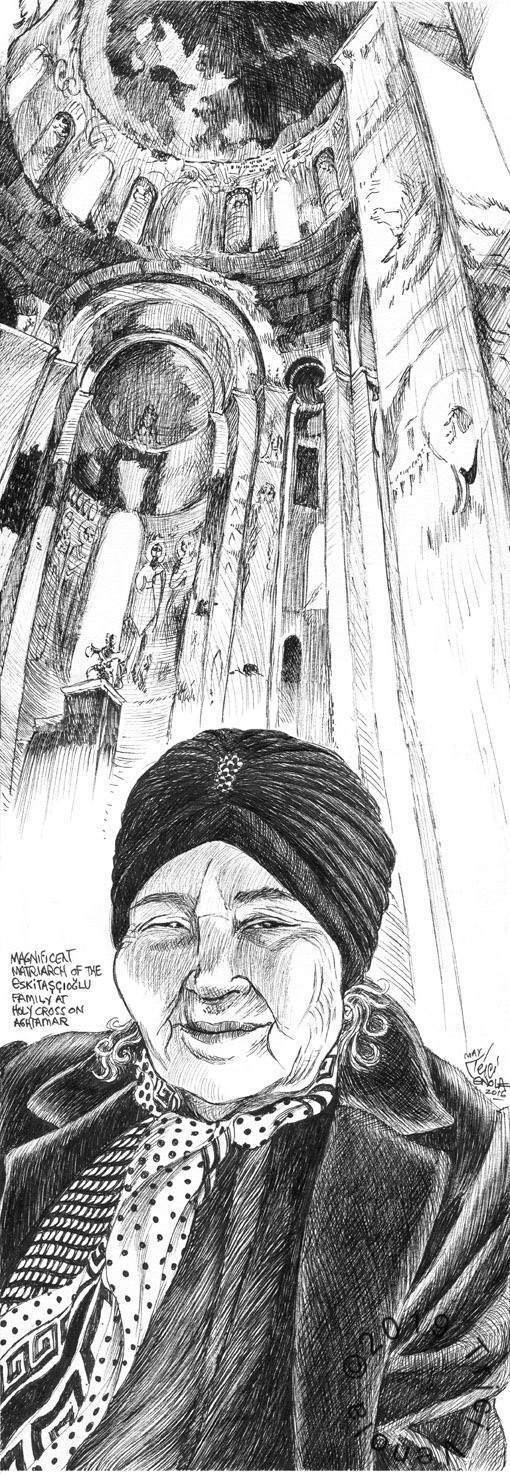
Enjoyed reading this.
Thank you Ellen! Yours is our first comment on the new site. Glad you like it.